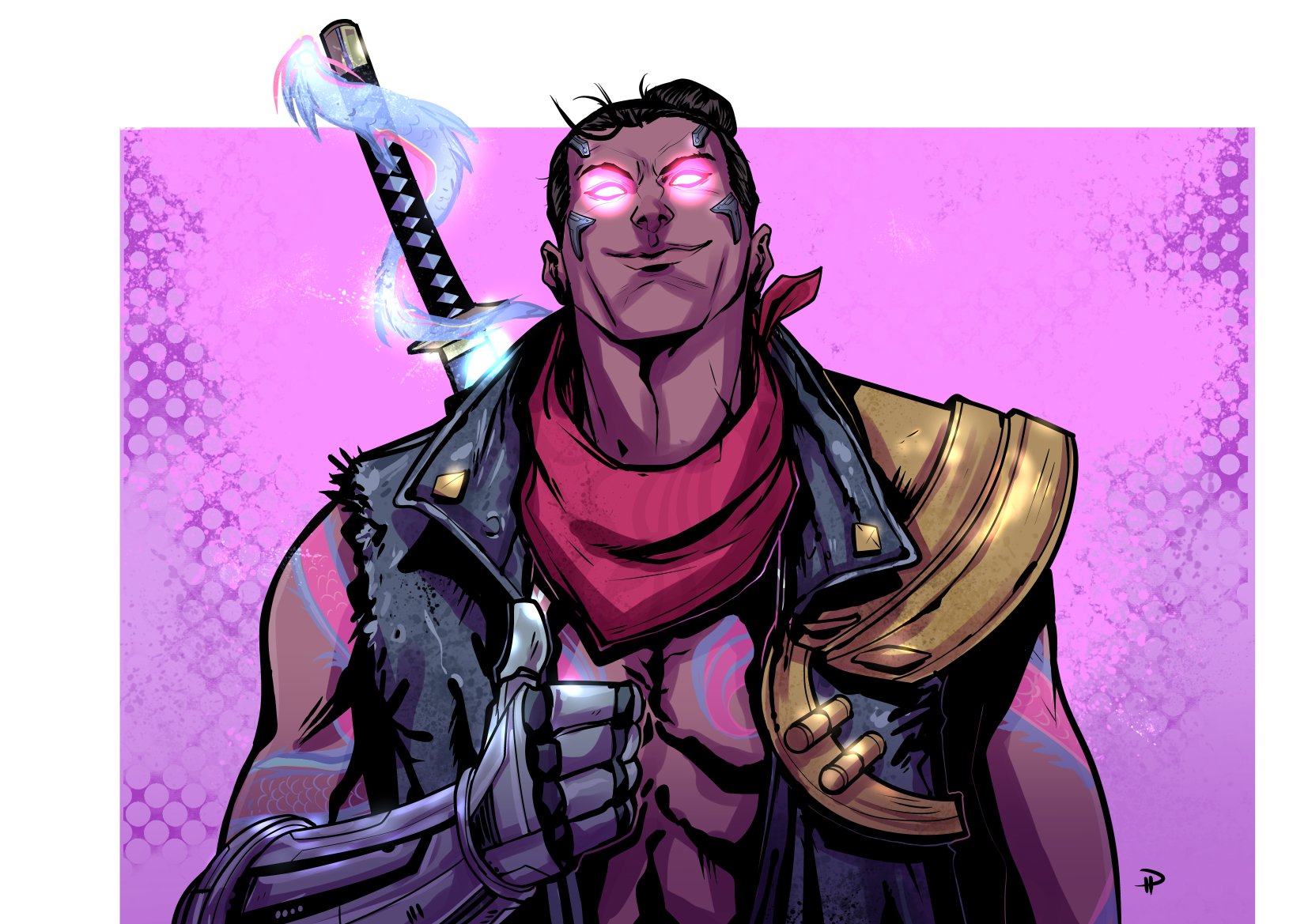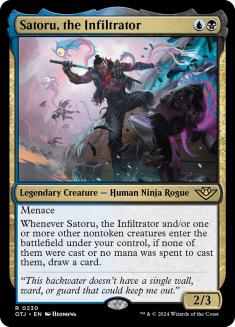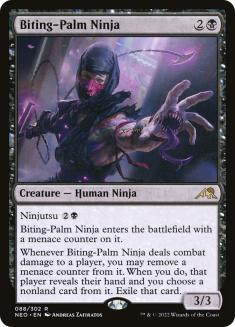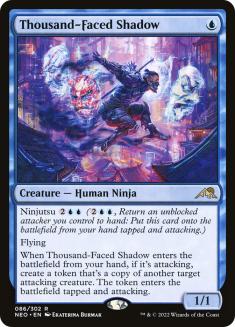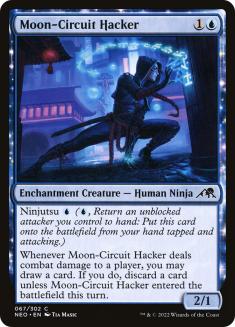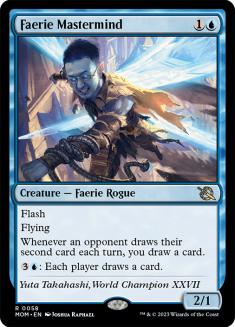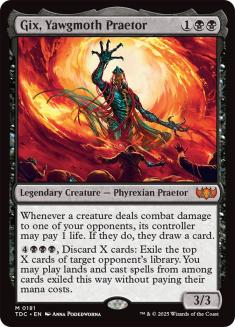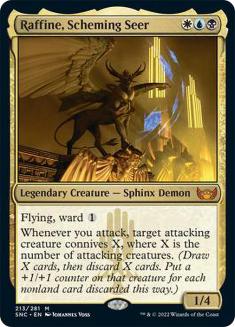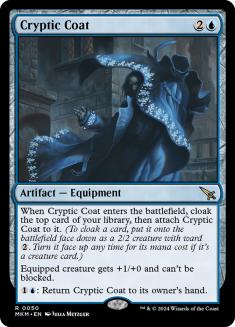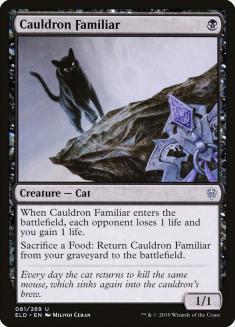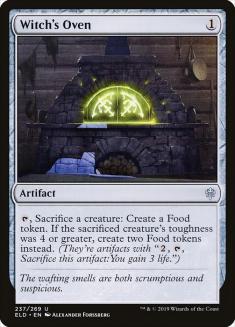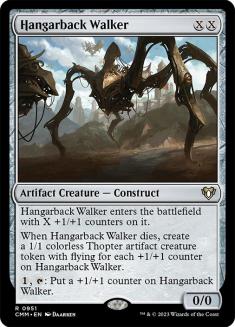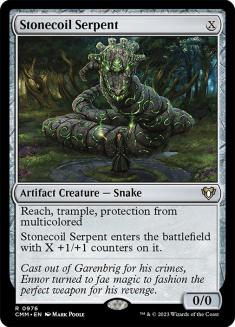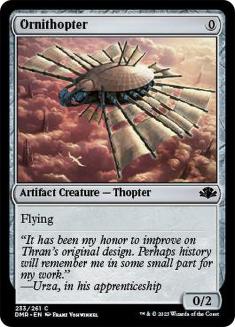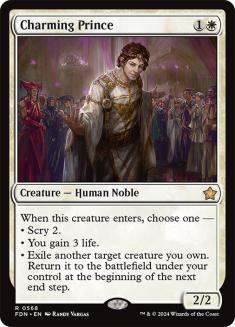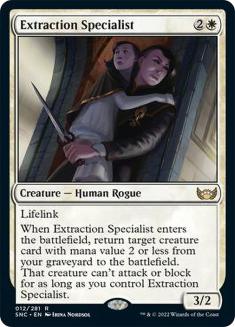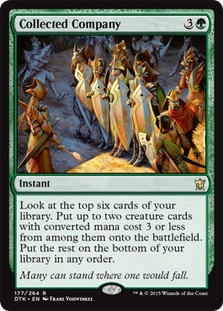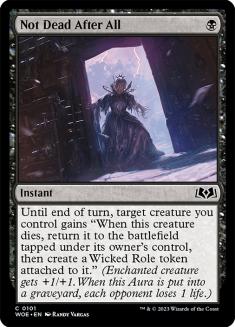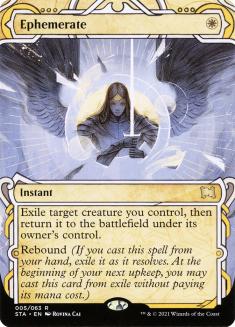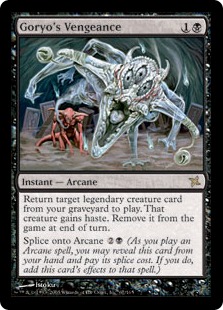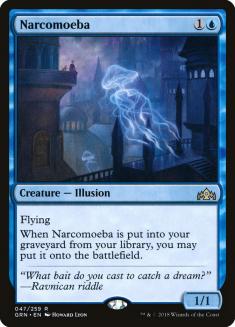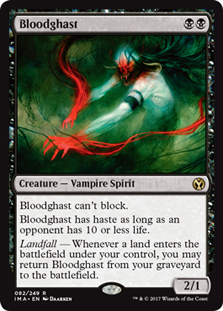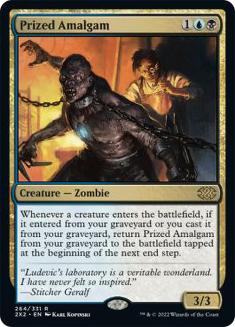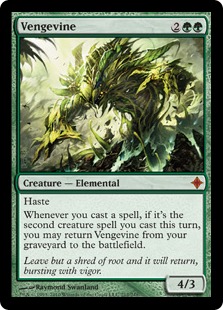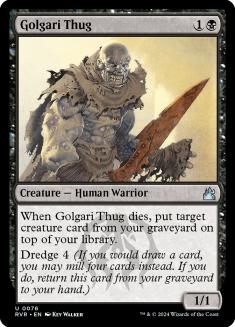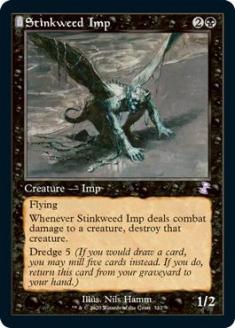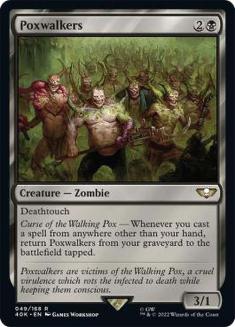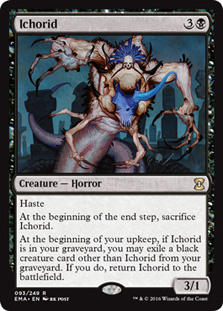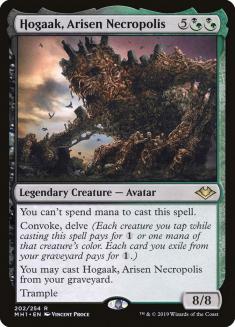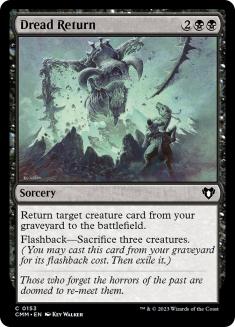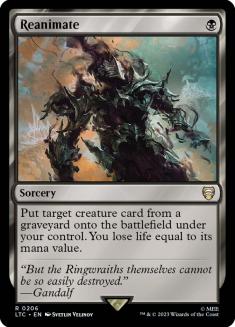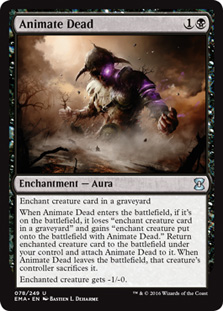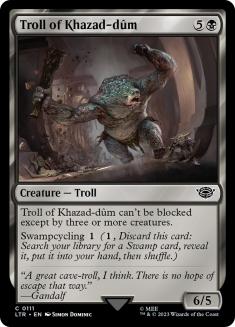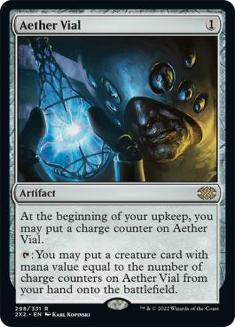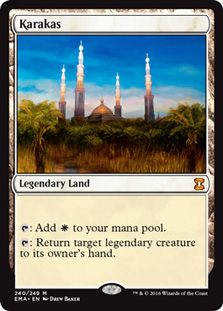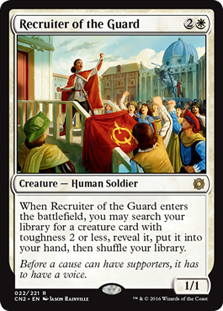Outlaws of Thunder Junction (plus its wider cinematic universe) has a legend for everyone. Some are clearly good on rate; some are oddballs who got lost on their way to the Commander precons. Some are easy enough to build around; others stretch your creative energy to its breaking point.
Satoru, the Infiltrator is a perfect mix of raw power and dangerous potential that manifests in many different ways inside and across formats.
Standard
With Kamigawa: Neon Dynasty enjoying its last hurrah in Standard, Satoru swoops in at the eleventh hour to lend hope to Ninjas you forgot were still legal. Satoru counts as a Ninja himself, and menace lets him clear a path for other Ninjas, but he also rewards those Ninjas for any successful Ninjutsu.
You can exploit this with a crafty tactic that dates back to the original Ninjas in Betrayers of Kamigawa almost twenty years ago. A Ninja that just entered via Ninjutsu counts as an unblocked attacker and is an eligible decoy for the next Ninja. Two Ninjas with cheap Ninjutsu abilities can loop each other in a mesmerizing dance that Satoru will reward with another card each time.
Despite a steady trickle of cheap evasive creatures like Spyglass Siren and Faerie Dreamthief that are perfect for smuggling in Ninjas, a dedicated Ninja theme is too much work for too little gain compared to the proven core of strong cards in the Dimir and Esper Midrange decks.
Satoru itself might find a home there, though. Those decks are always in the market for good two-drops, especially if they pair well with other stars:
Cryptic Coat is a game-changer if that game is slow and grindy. Cloaking a creature in this way triggers Satoru, and you can pick Cryptic Coat back up to do it all again.
Pioneer
As we turn to larger formats, Satoru becomes more and more ambitious and creative.
If you played Standard at the time – or Pioneer at most points since then – you’re all too aware of how obnoxious Cauldron Familiar loops can be before they also draw a card each time. Blue is the least natural colour for the Food or sacrifice synergies often found with Familiar, but it makes sense with a deeper graveyard theme – the Insidious Roots decks that have their own interest in Familiar, for example.
One of Modern’s most volatile combo decks in simpler times used Puresteel Paladin and Sram, Senior Edificer with free equipment like Accorder’s Shield and Bone Saw (you don’t realize just how many variants of these there are until you’re staring down twenty at once…) to tear through their deck while building a lethal storm count for Grapeshot. Satoru lets you recreate that play pattern with free creatures like Ornithopter or Modern classic Memnite alongside scalable threats like Hangarback Walker, Stonecoil Serpent, and Walking Ballista.
Creatures (31)
- 4 Ornithopter
- 4 Hangarback Walker
- 4 Chamber Sentry
- 4 Emry, Lurker of the Loch
- 4 Stonecoil Serpent
- 3 Ledger Shredder
- 4 Satoru, the Infiltrator
- 4 Geralf, the Fleshwright
Lands (20)
Spells (9)

You can build a dedicated ‘Satoru deck’ like this or a more regular deck with Satoru as a powerful value engine:
Creatures (41)
- 1 Thalia, Guardian of Thraben
- 3 Reflector Mage
- 4 Thraben Inspector
- 4 Thalia's Lieutenant
- 4 Charming Prince
- 4 Katilda, Dawnhart Prime
- 4 Extraction Specialist
- 1 Lagrella, the Magpie
- 1 Anointed Peacekeeper
- 1 Ertai Resurrected
- 1 Loran, Disciple of History
- 1 Melira, the Living Cure
- 2 Jirina, Dauntless General
- 1 Imodane's Recruiter
- 4 Novice Inspector
- 1 Delney, Streetwise Lookout
- 4 Satoru, the Infiltrator
Lands (32)

It’s easy to build around Satoru when many effects that find or recur it also trigger it in the process. Consider a line like this on an empty battlefield:
- Collected Company hits Satoru and Extraction Specialist (Satoru trigger #1)
- Specialist returns Charming Prince (Satoru trigger #2)
- Charming Prince exiles and returns Specialist (Satoru trigger #3)
- Specialist returns any creature (Satoru trigger #4)
All of these other cards are flexible and strong synergy cards that you’d happily play without Satoru. Adding it lights a fire under everything.
Modern
Once we get to Modern, some other ‘free spells’ enter the picture…
You didn’t think we’d get through Modern without talking about Evoke, did you?! Casting Grief by itself can feel weak when you’re just trading two cards for one – Satoru at least makes that an even trade. Once you introduce the combo elements like Not Dead After All or Ephemerate, you’re now turning a profit on one of the most powerful sequences in Modern. These lines constrict your opponent’s resources but require so many cards that you are now playing a small game too; Satoru breaks that symmetry in your favour.
Satoru is even an intriguing fallback option for the Esper Goryo’s Vengeance deck I covered last week. The deck can be prone to disjointed draws that don’t have a use for the various enablers; what if you could Goryo’s Vengeance back a Satoru (drawing a card), Ephemerate it to keep it around (drawing a card), and rebound Ephemerate for good measure (drawing another card)?
There’s no shortage of nonsense coming from the graveyard in Modern. These Dredge, Crabvine, and Hogaak co-stars all take different routes to the battlefield, but they all trigger Satoru when they arrive.
Drawing a random card has less value when that card could be another Narcomoeba or Bloodghast that belongs elsewhere – unless you can turn that draw into something much more. Bloodghast triggers Satoru, drawing a card – which dredges Stinkweed Imp, hitting a Narcomoeba, which triggers Satoru again, and so on until the chain stops. You can easily tear through a large chunk of your deck without trying too hard and while taking actions you wanted to take anyway.
Legacy
When you venture into Legacy, the guardrails vanish and you get the full Dredge experience. Once you get going, you might even be in danger of decking if you are forced to take too many Satoru triggers – but that’s a great problem to have!
The ‘fair’ take on Dimir Reanimator is the deck to beat in Legacy right now, and it might want Satoru on the team. Every Reanimate or Animate Dead draws a card, and so does the Grief you often pair them with. This deck lacks proper card advantage and boasts both Force of Will and Grief as pitch spells, so it can run low on cards quickly. Satoru buys some cards back and pitches to either in a pinch, so you no longer have to resort to embarrassing Dimir cards like Wail of the Forgotten.
Aether Vial gets out of control with Satoru, and the obscure but entrancing Esper Vial deck in Legacy is in the right colours for it with the perfect tools for it. Responding to Solitude’s Evoke trigger by using Vial to put in Charming Prince and blink it is already a thrill. Why not treat yourself to an Ancestral Recall on the house?
This is just the tip of the iceberg. I can’t wait to see what creative uses people find for Satoru across every format!

